I can’t believe I’ve been reading and trying to write my review of Mastering the Art of Soviet Cooking: A Memoir of Food and Longing by Anya Von Bremzen since November.
The rationing, the famines, food verging on rotting, minus forty degree weather, the long lines, and the many many deaths, the reality of people dying in the millions as I turned the pages of chapters… It wasn’t really Thanksgiving/Christmas holiday reading, and after a sad January and February I still couldn’t pick up the book. I wasn’t ready to resume reading about the details of normalized struggling that is Soviet life. It wasn’t until the past few weeks as spring brought cherry blossoms and irises and tulips and some 70 degree days of sunshine that my mood became lighter, and I picked the book up again to read a bit at a time.
I even tried to hold a carrot out for myself- when I finished the book, I would celebrate and reward myself by going finally to dine at the Russian pop-up Da Net and I would get to go on a dinner date to Kachka. Throwing in a stick as well, I told myself I would not dine at these two places until I finished the book.
I told myself by reading the memoir, I would have a richer experience because of references in the book to her family’s story and to Soviet history to the foods I might have.

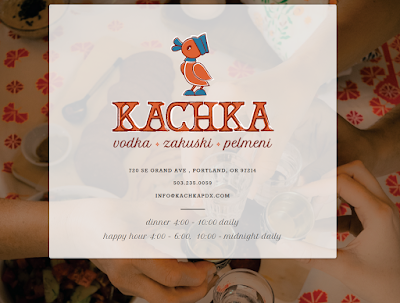
What I told myself, by the way, is totally true. Now that I finally finished the book, even just looking at the menus of these two places brings up newly acquired memories from Anya’s book.
Thinking about vodka flights, I know from her book how I need a quorom of three co-bottlers and that drinking without zazuska (a food chaser) is taboo. I know that “The Deep Truth fond in a glass demanded to be shared with co-bottlers.” and that toasting every time is mandatory.
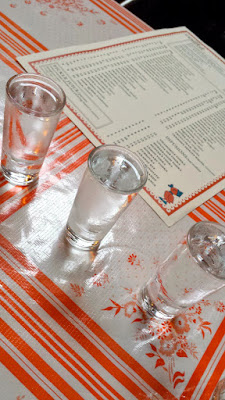
I think of her grandma Alla who drank beautifully with smak (savor), iskra (spark) and could pour in exact vodka portions with her Glaz-almaz (eye sharp as a diamond).
I think also of how alcohol is so ingrained in their culture that Russians pretty much drank anything from ethyl alcohol to wood varnish from Lenin’s Mausoleum Lab, eau de cologne to brake fluid to surgical glue and pilot fuel (MIG-25 airplanes were also nicknamed letayushchy gastronom, flying food store).
When I look at Kachka’s offering of a zazuski of brindza pashtet (sheep cheese and paprika spread and scallion on lavash), I think of Anya’s poor father, trying to impress with her mother’s favorite canapas, a gratineed cheese toast with Friendship Cheese, cilantro, and adzhika that he made himself. That makes me think about her mother and what she went through in terms of the melancholy and fear in her childhood, the love then disappointment with Anya’s father, and all the hopes and dreams she put on Anya and emigration to the US.

When I tasted Kachka’s take of salat Olivier, which is a duck Olivier, I think of Anya’s story of the communal salat Olivier that the whole building put together in celebrating how in darkness overnight, the tenants had knocked over an empty dwelling space to expand the communal kitchen in a mini revolution.
I think of how Anya explained that with salat Olivier, identity issues boiled down to choice of protein… and how everyone re-used mayo jars for everything and anything, including carrying bio samples for medical tests.
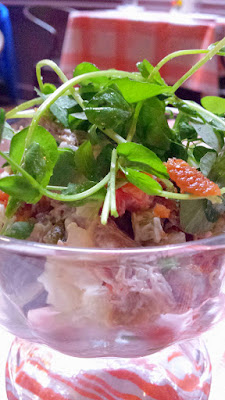
In other words, her book covers the whole gamut of cultural tradition by way of both notes of history and familial anecdotes interwoven with some of the good and a lot of the bad that frankly, seems to the essence of Soviet culture.
Each chapter covers a decade, starting with 1910. The first chapter centers around kulebiaka (a fish in puff pastry dish) as an anchor. That dish is used to connect Anya’s memoir with
1. the present (her mother and herself in Queens, New York, creating a czarist-era dinner)
2. a lesson on Russian culture (Russian writers using food as a great theme of “comedy and tragedy, ecstasy and doom” in a way similar to how English writers use landscape or class)
3. of the past of her family as it references the time when Anya lived with her mother in Moscow in a communal apartment before the US, and
4. the dark Iron hand of a history lesson as rationing and communism and the struggle for just staple foods to survive.
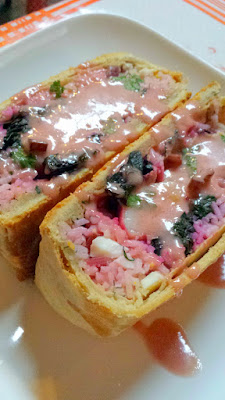
And that’s where it starts – the way she intertwines the timelines and facts and stories of that first chapter continues through the rest of the book, from the rise to the fall of the Soviet Union.
However, the center being such exquisite food stops there, because then we enter the 1920s with Lenin. That’s when Russia becomes a transformed society that was ready to sacrifice all to the socialist cause. This included private lifestyle and was a shift as food to only being utilitarian, simple, and not meant to be pleasure or luxury. Food was only meant as fuel for survival, with only few moments of food enjoyment here or there from crumbs of the privileged.
Because food is scarce, although it shows up in the chapters, it is no longer the center – at least not until the 1960s, when Anya is born and her more food-centric viewpoint (and the better availability of food) becomes the main narrative.
There is always a food mentioned though. And, in the back of the book at least, for every chapter/decade a recipe for one of the foods mentioned is shared along with personal notes. Not sure why they couldn’t have integrated that into the book itself, such as at the end of every chapter instead of hidden until I finished the book.
I didn’t realize how much I didn’t know about Soviet history until I read this book. Now I know a lot more about how truly terrible it really was. As I followed three generations of Anya’s family through history, every page told me the details of everyday hardship. Anya’s writing is easy to read. The storytelling of the memoir balances teaching everyone history (assuming correctly that we know nothing) with stories of her family and how they lived in those times to keep you interested and give you context to the historical facts she has to initially set up.
It may sound sort of dry, but I think it’s about needing to understand the circumstances around the anecdotes. The 1940s chapter is full of death every day and paranoia and delusion. But those facts are helpful so that you understand the parallel small joys of survival, and the food and longing that are the theme throughout the book and lives of the Soviet consciousness.
At one point she writes of bublik (a flimsy chewy poppy seed bagel-like bread roll) and podushechka (a pebble sized sugar candy). She explains the process for eating this was you suck on the candy under your tongue to make it last while smelling the bublik, and then spat out the candy for a bite of bulik so it would taste “like the greatest of pastries in your candy-sweet mouth. A bite of bublik, a lick of podushcechka. The pleasure had to last the entire fifteen minutes of recess… Some stoic classmates managed to spit out the half-eaten candy for younger siblings.”
Out of all the bleakness of the tales of each chapter are always these brief glimpses of small happiness, and of situations so ridiculous you can’t help but as a reader be amused and shake your head or roll your eyes even as you read the words.
The ubiquitous queues where you stood for three hours and still got damaged ones or wrong size, but also were a public square of gossip, and as we learn, where Anya’s parents met. At Anya’s Soviet kindergarten, some of her fellow kindergarten inmates got ill from the spoiled meat in the borscht, and one teacher instructed a colleague to reduce class sizes to open the windows to the gusty minus thirty degree weather!
After being enrolled in a kindergarten for the offspring of the Central Committee of the USSR instead of the Soviet kindergarten, Anya is now force fed a spoonful of sevruga eggs/caviar. Her kindergarten mealtimes included veal escalopes with porcini mushrooms, or farm fresh cottage cheese putting with lingonberry kissel – all which she then dumped behind a radiator because though she wanted to eat it knew it would horrify Mother.
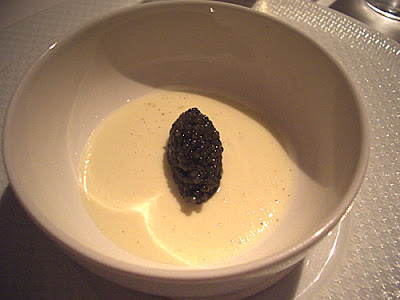
I enjoyed reading the book – and I promise you that it will make any Russian influenced meal you have afterwards have a lot more meaning.
Despite the title of Mastering the Art of Soviet Cooking, this is definitely not about mastering any cooking at all, it is firmly in the category of memoir and history book. If you are looking for recipes, I now have on my wishlist Anya’s other book to which she contributed and which is actually a cookbook, Please to the Table: The Russian Cookbook. As Anya herself describes in her 1990s chapter of the book (which is when she wrote Please to the Table), the cookbook has a whopping “400 recipes on 640 pages, it was heavy enough to whack someone unconscious”. And, it also won a James Beard award.
Mastering the Art of Soviet Cooking is the sort of book I wish I had been forced to read when learning world history because it makes facts become alive with the story of real people who had to live through those times and those facts and gives the context of culture.
The stories Anya shared are now part of my memory of Russia too, and so by accident, I have now learned several decades worth of Soviet history in detail that textbooks don’t offer.
I will be writing more on my meals at DaNet and Kachka later in future posts: the images you see for this post of food are from my visit to Kachka except the caviar, which is from French Laundry (Cauliflower “Panna Cotta” Beau Soleil oyster glaze and Russian Sevruga Caviar).
Have you read this book, or are you interested in Russian or Soviet cuisine? Have you been to DaNet or Kachka?
On a related but separate note, I used to be part of this wondrous book club in Chicago where we would read a book like this that was about another country and had some small hints of food, and then the book club would go meet at a restaurant with the ethnic cuisine of the book. Can you think of other books that would be a good excuse/pre-reading for a restaurant visit of that book’s highlighted food?
Disclosure: This book was provided to me as part of the Blogging for Books program, but I will always provide my honest opinion and assessment of all products and experiences I may be given. The views and opinions expressed in this blog are entirely my own.








